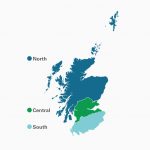West Dunbartonshire NOT the Worst UK Area for Superfast Broadband
A curious new report from BroadbandChoices has claimed that only 12 out of the 391 UK councils analysed have reached 95% coverage of “superfast broadband” and the worst is allegedly West Dunbartonshire (Scotland), which suffers from only 11% coverage. Except it’s completely wrong.
The report, which we initially only found summarised via the Scotsman, further states that on average only 58% of councils in the UK have superfast broadband and they note that this is “short of the UK government’s target of 95 per cent by the end of 2017.”
Confusingly though the wording of their official press release almost makes the above figure sound like speedtest based data, which would be a completely different ball game from network availability: “The average percentage of premises with superfast broadband speeds has been revealed to be just 58% based on Ofcom’s report.”
Advertisement
Apparently the report reached its conclusions by reviewing 391 council plans for broadband (these were said to have been outlined on each council’s website) and then comparing those with the “actual broadband performance levels as compiled by Ofcom” (i.e. the Connected Nations 2017 report).
Vix Leyton, Home Communications Expert at Broadband Choices, said:
“This study demonstrates that while many UK councils have active plans in place to improve connectivity for their residents, very few have succeeded in actually meeting their targets. Meanwhile, areas with the most need have councils who are failing to recognise good internet connectivity as a strategic priority.
Whilst our research gives a broad stroke picture of the UK by comparing council intention to reported performance, a lot of consumers are still in the dark when it comes to the actual service and speed they will personally receive until after they have signed up for a deal.
Councils should have their plans and target deadlines clearly outlined on their website for constituents to see, and if targets haven’t been met this needs to be addressed and reviewed, and residents are entitled to know why.
The lack of superfast broadband has a combined impact on productivity and communication, which is a real concern, translating into a loss for small businesses, and communities. Councils need to do more to improve connectivity to protect the productivity of the UK workforce.”
All of this seems woefully out of whack with the official claims and known independent coverage data. The national Broadband Delivery UK programme confirmed in January that it had achieved 95% coverage of superfast broadband (here) and they’re now aiming for c.98% by the end of 2020.
Teacher Says – Must Try Harder
Let’s begin by taking a look at West Dunbartonshire, which is easy because it only takes a few moments to figure out that the 11% figure, as presented for superfast broadband coverage, is completely wrong. Of all the places the report could have picked to highlight, somehow it managed to choose the one location that has nearly universal coverage of superfast broadband capable networks.
According to Thinkbroadband’s independent modelling, which is normally very close to the official estimates (if sometimes a little more pessimistic, which is a good thing), well over 98% of West Dunbartonshire can access a superfast broadband network thanks to wide coverage by both Openreach (FTTC) and Virgin Media (Cable HFC DOCSIS); the latter can reach over 90% and thus even ultrafast broadband is exceptionally high. Ofcom’s own figures broadly support this.
Advertisement
On top of that TBB also produces a much more up-to-date summary of network coverage across over 400 UK councils and well over half of those currently have superfast broadband coverage of greater than 95%, albeit using the higher figure of 30Mbps+ rather than the government’s lower definition of 24Mbps+. NOTE: The overall UK coverage figure of 95% is an average, so some areas will have better coverage and others worse.
By the looks of it Broadband Choices has thus misinterpreted Ofcom’s data in some very fundamental way. We should also point out that in England the broadband projects and coverage targets are established at county level, while individual councils (parishes etc.) may contribute but few have their own independent plans as this is not necessary. Now here’s a copy of the original press release for others to judge.
Only 12 Councils in the UK Provide Superfast Broadband
* Of the 297 councils in the UK with a plan in place, just 7 have hit the target reach for broadband they were aiming for
* A staggering 67 councils equivalent to 17% have failed to hit the targets and deadlines
* On average only 58% of councils in the UK have superfast broadband – short of the Government target of 95% by the end of 2017
* The worst area for superfast broadband is West Dunbartonshire with only 11% of premises with access.
An investigation by broadband comparison website, BroadbandChoices, which analysed almost four hundred UK council websites and Ofcom performance statistics, has revealed that many councils have missed their own targets and deadlines for improving broadband connectivity in their areas.
The research reveals that many councils fall drastically short of targets set to provide superfast connectivity. Just 12 out of the 391 UK Councils analysed have reached 95% levels of superfast broadband penetration or higher, the UKs target. It also revealed that only 7 councils in the UK have met the targets for broadband speeds they set themselves.
The latest analysis from BroadbandChoices highlights how much work must still be done by Councils to provide sufficient connectivity to all homes and businesses in the UK, regardless of location.
With broadband speeds affecting small businesses, rural communities and those who work from home, internet speeds have a significant impact on productivity and can cost businesses money, time and even customers or clients. are costing businesses thousands in lost productivity.
The average percentage of premises with superfast broadband speeds has been revealed to be just 58% based on Ofcom’s report – nearly 40% lower than the 95% UK-wide target. The research also reveals that almost a quarter (24%) of councils don’t have a publicly available strategy when it comes to broadband.
After reviewing 391 council plans for broadband outlined on each council’s website and comparing them with actual broadband performance levels as compiled by Ofcom the research also revealed that the percentage of premises with access to superfast broadband ranges from just 11% in some jurisdictions, to 98% in others. This dramatic discrepancy in connectivity means some council areas have 87% fewer homes able to access superfast broadband yet no clear plans in place to improve performance.
The research exposes how the majority of councils in the UK under-estimated how long it would take to make superfast broadband available to premises within their borough. Sixty-seven councils were found to have failed to meet the targets they set themselves within the timeframes they identified.
The findings suggest that many councils in the UK have failed to make superfast broadband a priority. Surprisingly,122 councils have information about plans to extend broadband penetration on their websites but exact details regarding reach and performance are inadequate. Broadband Choices research found vague claims in an unquantifiable format or without a specific target date for completing the work3. Meanwhile, many other councils failed to even reference broadband on their websites.
The volume of ongoing council plans demonstrates that many councils are still working towards achieving widespread connectivity in their areas, and that more work still needs to be done to reach the UK Government target of 95% coverage for superfast broadband, despite some reports that it has already been achieved.
Mark is a professional technology writer, IT consultant and computer engineer from Dorset (England), he also founded ISPreview in 1999 and enjoys analysing the latest telecoms and broadband developments. Find me on X (Twitter), Mastodon, Facebook, BlueSky, Threads.net and Linkedin.
« Phase 1 of London’s Gigabit Capable 4G and WiFi Network Complete

















































Comments are closed